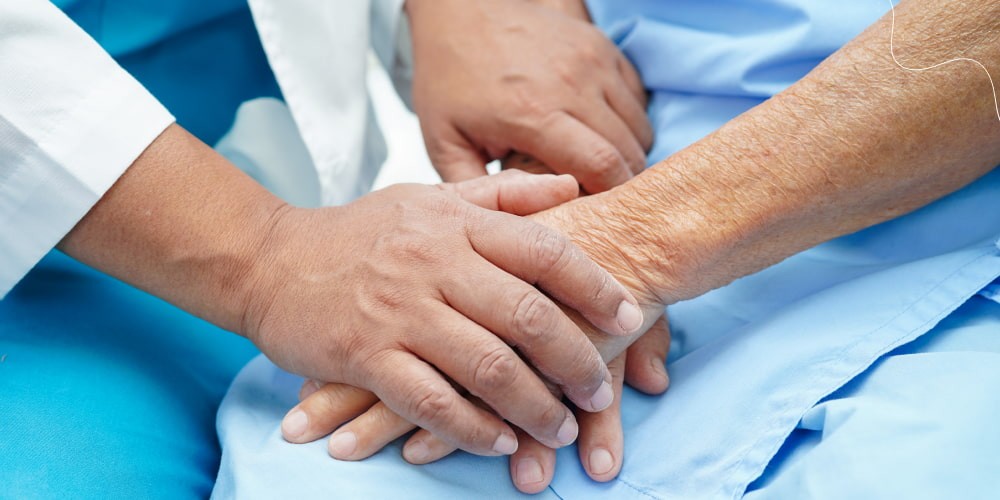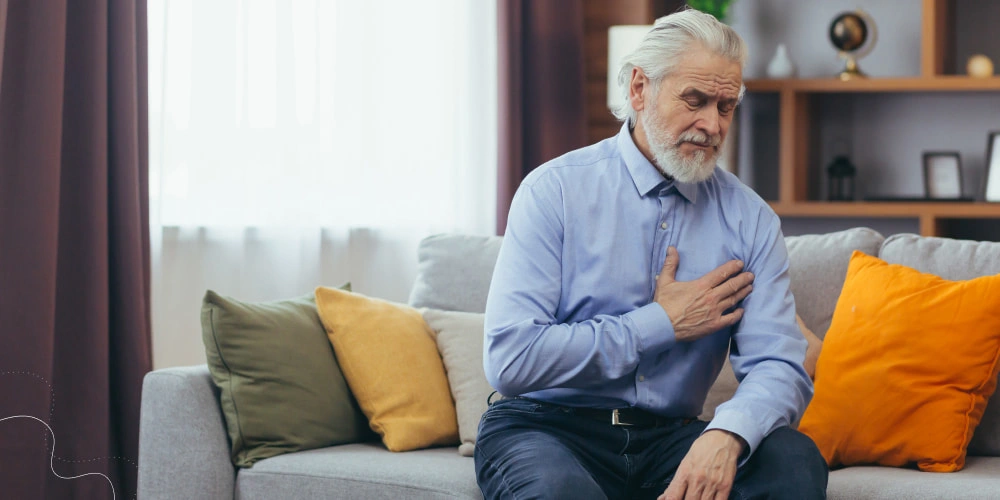The main goal of rehabilitation after a stroke is to restore those skills that a person has lost. It can improve the quality of life significantly and avoid a second blow. Caring for someone who has had a stroke can be very demanding. But there are some basic tips on how to care for a stroke patient at home:
- Be patient. It can take months, or even years, to make a full recovery.
- Help with everyday tasks like bathing, dressing, and eating. They may also need help with transportation and moving around the house.
- Listen to their concerns and offer words of encouragement.
- Encourage your loved one to eat a healthy diet and exercise regularly.
- Take breaks when needed and ask other family members or friends for help.
By following these tips, you can provide the best care for your loved one to recover from their stroke and live as independently as possible.
First Things what Caregivers Should Do about Caring for Stroke Patients
First and foremost, it is essential to keep the person comfortable and provide emotional support. They may be in a lot of pain and discomfort, so ensure they rest comfortably. This can be challenging for the person, and they may feel many emotions. Be there for them and offer a listening ear. Follow our tips on how to care for a stroke patient at home.
Educate Yourself
Depression is common after a stroke, so you need to be aware of the signs and symptoms when caring for stroke patients at home. How to educate yourself:
- Establish a daily routine and stick to it as much as possible. This will help the stroke patient feel a sense of normalcy and predictability.
- Divide tasks into smaller, more manageable chunks. This will help to prevent feeling overwhelmed.
- Plan and be prepared for setbacks. This will help you to manage expectations and not get discouraged.
Check Your Finances
If you are living with someone after a stroke, it is essential to check your finances. This includes making sure that you have enough money to cover the cost of living, as well as any medical expenses. You may also need to consider how your financial situation will change if your loved one cannot work. Many resources are available to help you manage your finances after a stroke, so be sure to seek the advice of professionals if you are unsure what to do.
Keep a Diary
This can be a great way to track progress, document changes, and signify any frustrations or triumphs of caring for stroke patients. So, you should:
- Make it a habit. Set aside some time each day to write in your diary. This can be first thing in the morning, before bed, or whenever you have a free moment.
- Keep it brief. You don’t have to write pages and pages each day. Just a few sentences will do. The key is to capture the day’s main events, both good and bad.
- Be specific. When documenting changes or progress, be as detailed as possible. For example, instead of writing “Patient is doing better,” try “Patient was able to move the arm for the first time today.”
- Be honest. Write about the good moments but also the challenges and frustrations.
Relaxation
There are many things you can do to provide relaxation for stroke patient care at home:
- Encourage the person to take breaks throughout the day, even if just for a few minutes. This will help to prevent fatigue and reduce stress.
- Make sure the living environment is calm and comfortable, with plenty of natural light and fresh air.
- Encourage the person to exercise regularly, as this can help improve mood and reduce stress. Practice deep breathing exercises or relaxation techniques.
- Offer massage or other touch therapy, as this can help promote relaxation.
- Play soothing music, either through headphones or speakers in the room.
- Make sure the person gets adequate sleep, which is crucial for restoring energy and vitality.
Nutrition
There are a few things to keep in mind when providing food care for a stroke patient at home:
- Make sure that the diet is high in fiber and low in fat and salt.
- A healthy diet will help to reduce the risk of another stroke.
- Avoid foods that are hard to chew or swallow.
- Encourage the stroke patient to eat slowly and chew thoroughly.
- Make sure that the food is easy to digest.
- Avoid foods that may cause allergies or reactions.
- Talk to a dietitian or doctor about what foods are best for the stroke patient.
- Be sure to include plenty of fruits, vegetables, and whole grains in the diet.
- Make sure that the food is fresh and clean.
- Avoid giving the stroke patient too much food at one time.
Help the person with their meals
They may not be able to eat alone, so you will need to help them. Cut their food into small pieces and ensure they get enough nutrition. It is also important to keep them hydrated. Make sure they are getting plenty of fluids, and if they are having trouble swallowing, you can give them small sips of water or ice chips.
Keep the person’s skin clean and dry to prevent infection
After a stroke, it is vital to keep the affected area clean to avoid infection. The best way to care a person’s skin after a stroke is to gently wash the affected area with warm water and mild soap. If the person cannot wash their skin, caretakers can gently help by using a wet cloth or sponge to clean the area. Avoid scrubbing the skin too vigorously, as this can lead to irritation. Keeping the affected area dry is also necessary, as moisture can lead to skin breakdown. You will also need to do frequent checks for any wounds or sores.
Rules on how to Care for Patients when They Come Home after a Stroke
After a stroke, patients will need to take extra care when they return home. First, it is important to help them with any physical therapy or rehabilitation exercises that have been prescribed. Ensure healthy food and give them plenty of rest. You should monitor their progress and help them to stay positive. They may be feeling frustrated and discouraged. Help them stay positive and set small, achievable goals. Be there to support them every step of the way. Here are some tips on how to care for stroke patients when they are coming home:
Home Safety First
There are some ways to provide home safety care for a person after a stroke:
- Remove any potential tripping dangers such as loose rugs or electrical cords.
- Install handrails on all stairs and in the shower/bathtub.
- Place a nightlight in the bedroom and bathroom to help with nighttime navigation.
- Keep a list of emergency numbers by phone.-
- Install a medical alert system.
- If you have any concerns about your home safety, be sure to speak with your healthcare team. They can assess your home and make specific recommendations.
Behavior or Mood Changes
Behavior or mood changes are typical after a stroke. Remember that these changes are often a result of the stroke and are not intentional when caring for stroke patients. So, you should:
- be patient: it may take time for your loved one to adjust to the changes caused by the stroke;
- try to understand: ask your loved one to explain how they are feeling. This can help you better understand their behavior.
- encourage positive activities: help your loved ones find activities that make them happy. This can help improve mood and behavior.
- communicate with the healthcare team: talk to the stroke care team about your loved one’s behavior or mood changes.
Close Connect with a Stroke Patient
This way of caring for stroke patients may include listening attentively, being respectful and patient, and demonstrating a genuine interest in the person’s well-being. Additionally, it may be helpful to encourage the individual to talk about their experiences and to offer support and encouragement throughout the recovery process.
Join a Support Group for Patients After a Stroke
Support groups provide a space for people to share their experiences, learn from others, and receive support and advice on treatments, rehabilitation, and other resources. They can also help you feel less isolated, better equipped and motivated to achieve your goals.
Ask your doctor or rehabilitation team for recommendations if you’re considering joining a support group. You can also search online for support groups in your area.
Help the Patient with Activities of Daily Living
There are many ways to help stroke patients with their daily activities at home. One way is to help them with their therapy exercises. You can also help with bathing, dressing, and eating. It can also be assistance in transportation to appointments and therapy sessions. Encourage the patient to move around: walking is good for the patient’s overall health and can help prevent future strokes.
Manage the Patient’s Medications
These are some tips on how to manage medications when caring for stroke patients at home:
- working with the patient’s doctor to create a list of all drugs (both prescription and over-the-counter) that the patient is taking, as well as the dosages and frequency of each medication;
- keeping a close eye on the patient’s medication use, including watching for any potential side effects or interactions between medicines;
- working with the patient to create a system for organizing and keeping track of medications, such as using a daily pill box.
Taking Care of Yourself when You have a Stroke Patient
It is vital to take care of your health if you are looking after a stroke patient at home. It can be difficult and demanding, but you should ensure you stay well. Here are some tips for taking care of your physical and emotional health:
Focus on Your Physical Health
The most important things you should do:
- Make sure to get enough sleep. This can be difficult when caring for a patient who may need around-the-clock care. But you need to get enough rest.
- Eat healthy meals and snacks. It can be tempting to skip meals or grab unhealthy snacks when you are short on time. You should ensure that you eat nutritious foods.
- Exercise regularly. Exercise can help reduce stress, improve mood, and maintain overall health.
Focus on Your Emotional Health
Here are a few tips to help you manage your stress and anxiety when caring for a stroke patient at home:
- Take breaks often, even if just for a few minutes. Step outside for fresh air, take a hot bath, or read your favorite book.
- Stay connected with friends and family. Talking to someone who understands what you’re going through can significantly help.
- Talk to your doctor about your feelings. They can help you find ways to manage your stress.
Try to be Patient with Yourself
It can be challenging to care for a stroke patient at home, because they may be unable to communicate or may have difficulty moving. However, it is necessary to remember that stroke patients are still people and deserve to be treated with patience and respect. Try to seek help from family, friends, or medical professionals. Do not hesitate to ask for help if you feel overwhelmed living with a person after a stroke.
Laugh More Often
Laughter is a great way to relieve stress and make stroke patients feel more comfortable. Here are some tips on how to stay energized and happy more often:
- Spend time with friends or family members who make you laugh.
- Watch comedy shows or movies.
- Read jokes or other humorous material.
- Additionally, trying to see the humor in everyday situations can be helpful, even when it may be frustrating or difficult.
Ultimately, the best way to learn to laugh more often may be to simply experiment with different things and see what works best for you.
Love Yourself
While caring for stroke patients, schedule time for yourself. Make sure to set aside some time each day to do something you enjoy, even if it is just a few minutes. This can be anything from reading, going for a walk, or taking a yoga or meditation class. Take care of your health. It means eating a healthy diet, getting enough sleep, and exercising.
Book an appointment with Lone Star Neurology doctors
Stroke recovery can be a long and challenging process, but with the help of rehabilitation and support from family and friends, most people make a good recovery. It is essential to stay positive and keep working towards your goals. Lone Star Neurology doctors can help patients recover by providing proper treatments and rehabilitation. We focus on state-of-the-art knowledge in neurology, cutting-edge technology, and long-standing personal relationship with our patients.
FAQs
- Can stroke patients be left alone?
Stroke patients must always have someone to ensure their safety and well-being. Patients who have suffered a stroke may be at risk for another stroke if left alone. Furthermore, patients may experience a decline in their condition if they are not monitored closely.
- Can I take care of a patient after a stroke without medical education?
No, you cannot care for a patient after a stroke without medical education. Strokes are severe medical conditions that require immediate medical attention. If you are not trained, you could do more harm than good. It is best to leave the care of a stroke patient to the professionals.
- Can stroke patients do physical activity?
Yes, stroke patients can do physical activity, but they should check with their doctor first to ensure it is safe. Physical activity can help stroke patients recover from injuries and improve their health.
- How can care workers support an individual after they have had a stroke?
It includes helping them to adjust to any changes in their abilities, encouraging them to eat healthy food, and staying active. It can also consist of assisting them in communicating their needs, providing emotional support, and doing rehabilitation exercises.















Please, leave your review
Write a comment: